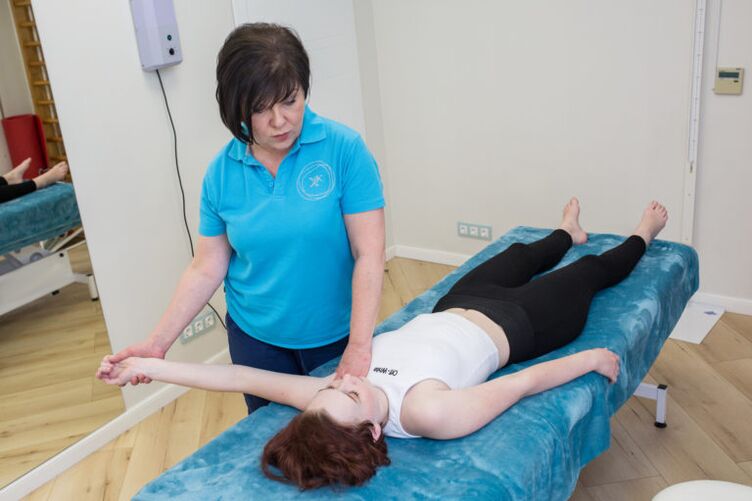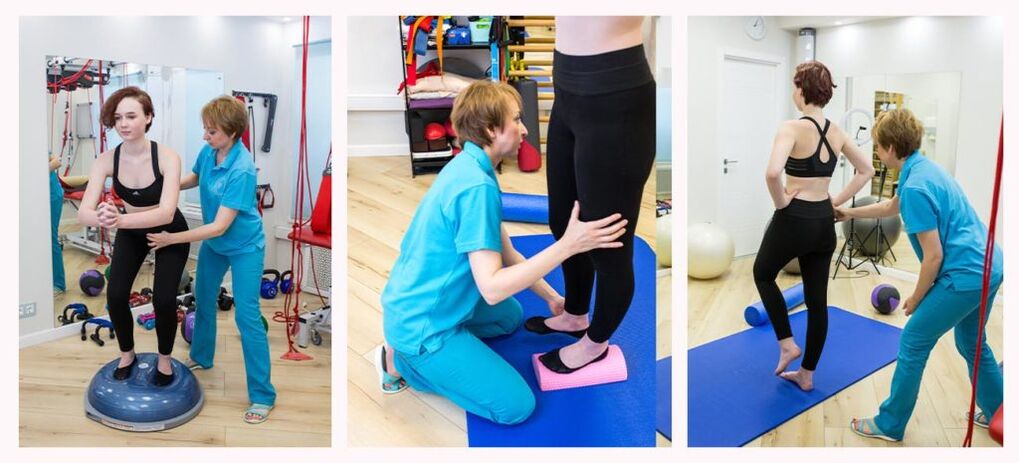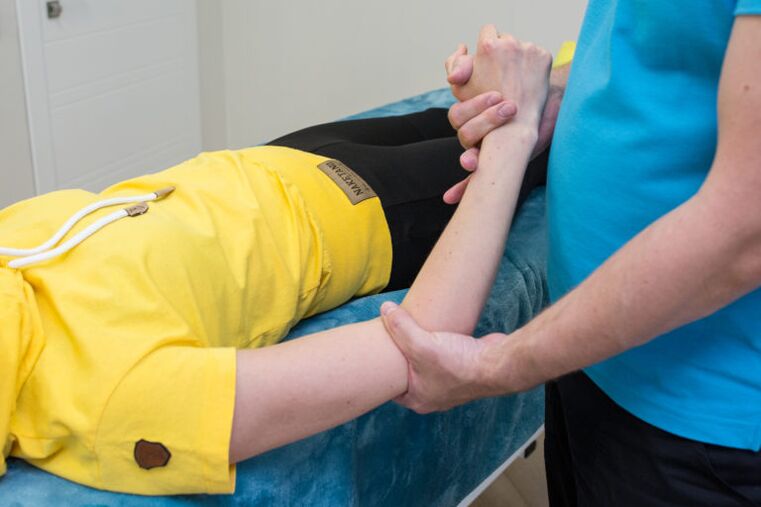Joint diseases are one of the most common manifestations of musculoskeletal disorders. They develop in the body in the presence of inflammatory, degenerative-dystrophic, infectious processes, as well as as a result of trauma and congenital anomalies.
Doctors distinguish dozens of different joint diseases with quite similar symptoms (pain, tingling, limited mobility). This complicates the diagnosis and prevents timely treatment. Therefore, in this article, experts will tell you about the manifestations and developmental features of the most common articular pathologies.
Characteristics of the joints and the causes of their diseases
A joint is any connection of two or more bones. There are 38 pairs of joints (76 joints in total) in the human body. They give our body mobility and elasticity. Movement is a vital function, and if the disease limits it, the quality and duration of life decreases.
Each joint has articular surfaces - these are the surfaces of special, hyaline cartilage-covered bones that go into it. It is tight, elastic and is needed to protect the bones from abrasion while moving. This also ensures that they fit together perfectly. Cartilage erosion is a common cause of joint pain, tingling, stiffness and other symptoms of the disease.

Joints are characterized by a complex structure. Joint surfaces, capsules, fissures, synovium, periarticular muscles and ligaments - all these structures provide motor and support functions of the joint. Their damage can lead to the development of the disease.
Causes of diseases
Many people mistakenly believe that only the elderly suffer from joint diseases due to age-related changes and weakness of the body. But this is not the case!
Can develop as a result of joint diseases:
- injuries;
- excess weight;
- physical activity;
- incorrect posture;
- straight legs;
- hereditary predisposition;
- foods with insufficient micronutrients;
- diseases of the internal organs;
- metabolic disorders;
- transferred transactions;
- infections.
These factors can affect people of all ages and even people in relatively good health (for example, men and women of working age, adolescents, children, athletes, etc. ).
Therefore, this group of diseases is getting younger - second only to cardiovascular and endocrine diseases in terms of frequency and disability, and their treatment is associated with high financial costs.
Mechanism and types of disease development
In the pathogenesis of joint injuries, doctors distinguish 4 possible ways:
First: the presence of inflammation in the body
This type of lesion is characterized by a sudden onset, a rapid increase in inflammatory symptoms: swelling, pain, redness, fever. Occurs in children and adults in infections, allergies, autoimmune processes.
Juvenile arthritis
It is characterized by an autoimmune process (ie, the body destroys itself) for unknown reasons. Transmitted infections, even in mild forms (such as vaccines), are often provocative.
The disease affects the large joints (knees, elbows) in children and adolescents, adversely affecting their growth and development. Joint pain is accompanied by severe swelling, redness of the skin and fever.
Rheumatoid arthritis
It also stems from an autoimmune process for no apparent reason. More often women get sick, the average age is 45-50 years. About 70% of patients are disabled.
Affects a small joint (or several), such as the wrists and fingers. This affects patients' ability to work and even self-care. They complain of severe pain, swelling, changes in the shape of the joints and their morning stiffness.
Psoriatic arthritis
Almost half of patients diagnosed with psoriasis develop an inflammatory process in the small joints of the hands, feet and spine. The cause of arthritis, as the cause of the underlying disease, is unknown.
Psoriatic arthritis can affect the interdigital and large (elbow, knee), symmetrical or non-symmetrical in one or more joints.
The main manifestations are pain extending to the ligaments and tendons, swelling of the fingers and blue skin, limited mobility.
Gout arthritis
Against the background of gout, it develops as a result of the deposition of uric acid salts in the joints. Men suffer more often than women, age - 40-50 and over 60, respectively.

A characteristic feature is the defeat of a joint, which begins suddenly and lasts for several weeks, accompanied by severe pain and swelling with the formation of uric acid nodules (tofuses).
Spondyloarthritis with ankylosing spondylitis
A chronic lesion affecting the spine, paravertebral muscles and pelvic sacroiliac joints.
Men suffer more from the disease than women and develop in their 20s and 30s. Their main complaint is pain in the lower back, sacrum, and hip joints; stiffness of movement after a period of rest (especially in the morning, after sleep).
Even with the elimination of symptoms and relative well-being, without eliminating the root cause, the inflammation will continue to develop and will lead to a new exacerbation over time. Therefore, articular pathology is often chronic and leads to disability.
Second: the presence of degenerative-dystrophic process
This type of lesion is destroyed by physical factors. Injuries and microtraumas, excessive physical exertion, harmful effects of the environment (hypothermia, vibration) - all these pathological factors lead to the destruction of cartilage and narrowing of the joint space.
Deformative osteoarthritis
It develops as a result of damage and destruction of articular cartilage. Its articular surfaces are rough and sensitive to friction. Over time, the process of destruction spreads to the bones, capsules, synovium, ligaments and muscles. Chronic inflammation and changes in the shape of the joint are visible.
Osteoarthritis is the most common joint pathology. It reduces the quality of life of patients, causes disability and is difficult to treat. Men are more likely to get sick in youth and women in old age.
Clinically, osteoarthritis manifests itself with severe pain and limited mobility, increasing with physical exertion. In the later stages, even rest and tranquility do not bring comfort.
Osteochondrosis
It affects the spine and is caused by degenerative processes in the intervertebral discs. Under the influence of adverse factors, the nutrition of the discs is impaired, which leads to their loss of shape (until the formation of protrusions and hernias), aging and destruction.

As a result, the spine loses its ability to move, there is pain, numbness, stiffness, muscle weakness, difficulty urinating and bowel movements, headaches, dizziness. Symptoms depend on the part of the spine where osteochondrosis develops and can be very different.
Deformed spondylosis
This condition is also called "facet syndrome". In this case, the process of destruction affects the structures of the intervertebral joints (capsules, ligaments, facets).
It often occurs in the most "loaded" part of the spine - the lumbar region. It manifests itself as pain that spreads to the feet and intensifies with prolonged walking or standing.
Osteochondropathy
It is caused by aseptic (non-infectious) bone necrosis, for example, due to disruption of the blood supply. As a result, the bones that enter the joint are often prone to fractures. In advanced cases, patients can be seriously injured, even while sleeping.
In the early stages, the disease does not manifest itself in any way. Most of the patients are athletes and people who lead a "healthy" lifestyle. The former are subjected to excessive stress, the latter deliberately restrict their diets and deprive the body of necessary substances.
To destroy dense and elastic cartilage, the pathogen must act over the years, so degenerative-dystrophic changes are more common in old age. Or he must move with super force, as in sports.
Many professional athletes become disabled at a young age.
Third: congenital joint pathologies
This type of lesion causes abnormalities in the structure and development of the joints as a result of maternal infections and injuries, accompanying pathologies, late toxicosis, genetic diseases.
Frequent manifestations of congenital anomalies are birth traumas, such as hip dislocation or clavicle fracture.
Congenital dysplasia of the hip joints
It develops as a result of disruption of the formation of all articular structures in the prenatal and postnatal periods. Predisposing factors are heredity and tightness. Girls are more susceptible to this pathology than boys - the incidence rate is 80% and 20%, respectively.
With dysplasia, the shape of the joint changes and the ligaments become very elastic. This causes the femur to move and impedes the mobility of the thigh joint, which can lead to disability.
Congenital baton
Deformation of the foot inward relative to the lower leg due to the defeat of the ankle joint.
The sticky foot often affects boys, and in half of the cases it is bilateral. If the defect is not removed in time, the child will not be able to walk normally and will be disabled.
Marfan syndrome
Genetic pathology in which the patient has elongated bones in the arms and legs, as well as hypermobility of the joints (excessive mobility).
In the early stages, many congenital joint pathologies can be completely eliminated or development can be slowed down using conservative methods. Late diagnosis and treatment can lead to impaired support and movement functions until disability.
Fourth: diseases of the muscles and joints of the joint
Pathologies of this group often develop as a result of increased physical strength and hypothermia.
Tendinitis
Inflammation and destruction of the tendon. Especially in weather conditions it is accompanied by tension and painful sensations.
Myositis
Development of inflammation in the periarticular muscles. Accompanied by pain when feeling the affected area, it increases with movement.
Bursitis
The inflammatory process is localized in the joint capsule. It often affects professional athletes (wrestlers, runners, weightlifters).
Synovit
Damage to the synovial membrane with the accumulation of fluid in the joint cavity. Accompanied by pain, swelling, stiffness of movements.
The relationship between disease and joint type
There is a definite example of which pathology is affected by which compound. Some even have their own special names.
For example,knee jointcan be affected at any age, regardless of the patient's gender and occupation. However, the defeat of the meniscus and transverse ligaments is more common in athletes. Gonarthrosis - in the elderly. Infectious arthritis - in children.
Pain insideshoulder jointcan cause shoulder-scapular periarthritis, cervical osteochondrosis, osteoarthritis.
forelbow jointTypical damage to periarticular tissues - epicondylitis or "tennis elbow", "golfer's elbow".
The hip joint is more affected in older people. There is a risk of fracture of the femoral neck as a result of osteoporosis and coxarthrosis.
Pain insidesmall jointsHands and feet are observed in rheumatoid, psoriatic, gouty arthritis.
However, despite the specific manifestations, the diagnosis of articular pathology is often difficult, which is fraught with the risk of late initiation of treatment and complications.
Symptoms and Diagnosis
Among the complaints of concern to patients with articular pathology:
- pain;
- Swelling and swelling;
- Shape change;
- Stiffness of movement;
- Failure to perform normal range of motion.
Doctors call them joint syndrome. Doctors call them joint syndrome. It is also possible for redness of the skin, rashes and the appearance of dense nodules. Of the common symptoms, patients often complain of fever in the lesion area or throughout the body, and increased fatigue.

As you read the previous section, you may have noticed that all of these symptoms are present in almost any joint pathology. Therefore, it is not possible to make an accurate diagnosis based solely on your complaints - you need an examination and consultation with a doctor.
During the examination of the patient, the doctor not only pays attention to his complaints. To make an accurate diagnosis, it is important to know the time of their occurrence, which joint is affected, whether one or more of them are symmetrical, and other factors.
Let's take a closer look at each symptom:
Pain:
It occurs in almost every pathology. Doctors distinguish several types of it:
- Inflammatory- increases in the morning, after resting for a while. Characteristic of rheumatoid, young, gouty arthritis, spondyloarthritis.
- Mechanic- Appears during a change in physical strength or body position, often disappears in the afternoon, after rest. It is typical for osteoarthritis, osteoarthritis, osteochondrosis, pathology of periarticular tissues.
- "Start"- Occurs in the first 15-20 minutes of physical activity after the rest period. Typical for osteoarthritis.
- "Blockade"- occurs as a result of compression of the cartilaginous fragment in the joint space, as a result of which the joint "bends". May be accompanied by a crackling sound. Occurs in osteoarthritis.
- Stable- Continues regardless of the load and time of day, may increase at night. It is characteristic of osteochondropathy, osteomyelitis, tumors and tuberculosis of the bones.
Number of affected joints:
- One (monoarthritis): young, with gout, psoriatic arthritis.
- Two to four (oligoarthritis): with rheumatoid arthritis, spondyloarthritis.
- More than four (polyarthritis): with rheumatoid, gouty arthritis.
Symmetry of the lesion:
- Symmetrical: for rheumatoid arthritis.
- Asymmetric: for spondyloarthritis, gout, osteoarthritis.
- "Nomad": with gout.
Morning stiffness in the joints:
It is felt by the patient as impossibility and tension of movement. It occurs in the morning and is associated with the accumulation of fluid in the articular cavity overnight. Rheumatoid arthritis is typical for spondyloarthritis.
Also, the doctor pays attention to common complaints:
- Increased body temperature;
- Redness of the skin, the presence of a rash on it;
- Defeat of internal organs.

Laboratory (blood, joint fluid analysis) and instrumental studies (X-ray, CT, MRI, ultrasound) are required to make an accurate diagnosis.
The result
Joint pain and dysfunction can occur for a variety of reasons. There are pathologies that cannot be treated, but many of them allow a person to live a full life with adequate and timely treatment. Therefore, if you have at least one of the listed symptoms, contact your doctor - do not diagnose yourself, do not prescribe treatment and do not tolerate more pain.
We use a holistic approach to the treatment of joint pain, thanks to which many of our patients have regained the joy of movement.























